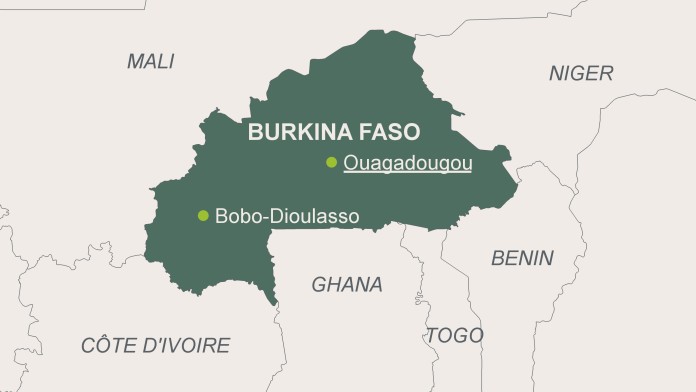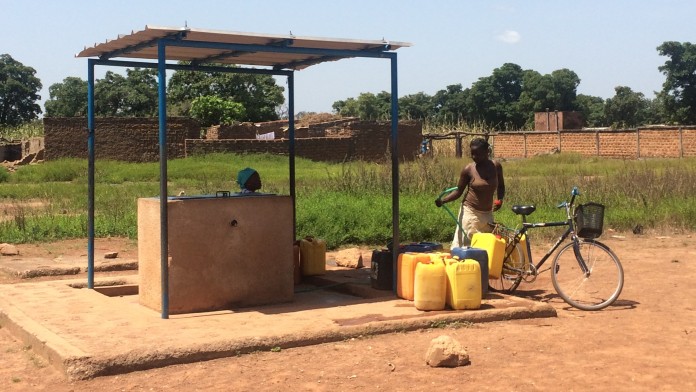
As of: 10/2022
Despite considerable progress in recent years, almost 5 million people in Burkina Faso still lack access to clean drinking water. More than 15 million do not have adequate sanitation. The high population growth is leading to rapidly expanding cities. The poor sections of the population in particular settle in informal settlements on the outskirts of the city. There is a lack of water connections, public standpipes, washing and toilet facilities. On behalf of the German Federal Government, KfW is supporting Burkina Faso in expanding and enhancing the drinking water and sanitation system in underserved cities.

Burkina Faso’s population is growing at a rapid pace of close to 3%. Since 2000, the population has almost doubled to more than 20 million. Many people try to escape poverty in rural areas, seek their fortune in the city and settle in informal settlements on the outskirts of the city. Here, there is a lack of the necessary infrastructure, especially safe, treated drinking water, sufficient standpipes and connections for drinking water as well as washing and toilet facilities. The public standpipes are far away and waiting times are usually long.
The public water supplier is barely able to provide drinking water for everyone. In addition, the groundwater level is falling.
In some cities, new wells need to be drilled to access drinking water. Around a third of the Burkinabe population receives water from open wells or surface water. The result? Between 20 and 30% of all cases of illness in Burkina Faso are due to contaminated drinking water. Many children die from diarrhoea or are unable to attend school regularly due to frequent illnesses.
One of the 17 Sustainable Development Goals of the 2030 Agenda envisages that, by 2030, all people will be able to access safe and affordable drinking water and use appropriate sanitary facilities. Burkina Faso is still a long way from this goal.
This is why KfW is supporting the country in expanding the drinking water and sanitation supply in cities in the southwest of the country.
It focuses its work on 16 cities that have been underserved until now in the Boucle du Mouhoun, Cascades, Hauts-Bassins and Sud-Ouest regions. The expansion of the water supply in three of these cities has already begun. In these regions, it is not only population growth, at around 5%, that is significantly above the national average. The proportion of poor people in these cities is also higher than the national average. Of the almost 500,000 inhabitants of the programme cities, more than a third do not yet have a regular water supply, and more than two thirds do not have access to adequate sanitary facilities.
The project is modernising and expanding the water supply for over 100,000 people in the cities of Banfora, Bérégadougou and Niangoloko in the Cascades region. A drinking water treatment plant is being expanded in Banfora.
In Banfora and Niangoloko, renewable energies will also be used in water supply in the future. In Niangoloko, the project partner, the water supplier ONEA, is switching to photovoltaics as an energy source, for example. Drilled wells are also partly already powered by solar energy. Future plans include the construction of a 60-kilometre-long pipeline from Banfora to Niangoloko and the expansion of a wastewater treatment plant.
The project partner also organises awareness campaigns on hygiene issues. The aim is for people to be able to transport the water from public standpipes to their homes in a hygienic manner and also to improve their personal hygiene.
In total, around 400,000 people benefit from the DC programme, which is being implemented in several phases. The proportion of people who can access clean water is set to increase by a quarter in the programme cities. The routes to public standpipes are to be shortened. Once the project is completed, only half as many people in the programme cities will have to wait for more than half an hour to get water.
However, the project is not only intended to improve access to water, but also the quality of the water. The project’s objective is to ensure that 90% of the water in the programme cities meets the standards of the World Health Organisation (WHO) for drinking water.
The new drinking water systems and sanitation facilities in the previously underserved cities in the programme region reduce the number of water-induced diarrhoeal diseases. The proportion of people who know how unclean water causes disease has risen from a quarter to over two-thirds.
The project contributes to the achievement of these following United Nations Sustainable Development Goals:
KfW Group
KfW Development Bank
Agriculture, water and biodiversity in West Africa